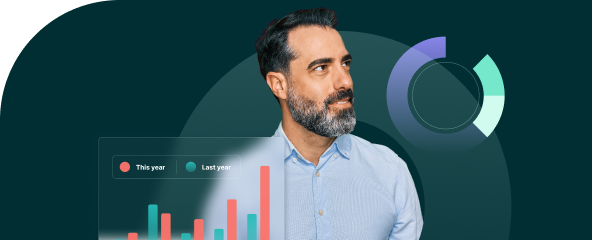What is the Difference Between P2P, R2R, and Q2C?
Knowing the difference between procure-to-pay (P2P), record-to-report (R2R) and quote-to-cash (Q2C) is essential to your procurement process. Not only do these processes help you understand how to make your procurement more streamlined, but they also improve efficiency.
Operational processes like these are the secret weapon to speeding up your organization’s growth timeline. Most importantly, they help your organization collect the right data and work with the right vendors. In addition, they also ensure proper compliance standards in your accounting processes.
In this blog, we provide a quick run-down of what each process entails and the steps related to them.
Here goes.
Procure-to-pay
Procure-to-pay covers the supply management process. In other words, it’s the process between procuring goods and services and paying for them. Typically, a procure-to-pay process looks like this:
- Identify the requirement
- Authorize the purchase request
- Approve the purchase request
- Procure the good or service
- Identify the supplier
- Inquire
- Receive a quote
- Negotiate on the quote
- Select a vendor
- Acknowledge the purchase order
- Receive an advance shipment notice
- Receive a goods receipt
- Record the invoice
- Conduct a 3-way match
- Pay the suppler
It’s important to remember, however, that this process doesn’t include sourcing or finding suppliers. If you want to read more about these steps in-depth, explore our guide here.
Quote-to-cash
Quote-to-cash is the opposite of procure-to-pay. Ultimately, this process is one that covers the following steps:
- Configure the product or service
- Understand price
- Create and negotiate a quote
- Manage your contract lifecycle and order
- Invoice the supplier
- Receive a payment receipt
Quote-to-cash, however, only captures the revenue generating cycle of organizations. This means that it includes quoting and invoicing, but doesn’t include things like:
- Prospecting customers;
- customer service; or
- any support beyond the initial payment.
Record-to-report
Record-to-report is an operational management process sometimes just referred to as reporting. Above all, this process speaks to the end-to-end procurement cycle, from collecting data to consolidating it. In addition, record-to-report allows financial organizations to deliver on streamlined accounting integrity as apart of the close process.
According to a study by Oracle, the steps of the record-to-report process are as follows:
- Extract data from transactional systems
- Ensure compliance with accounting standards
- Transform data into meaningful key performance indicators
- Determine the best way to present information
- Share the results with internal and external stakeholders
- Engage Stakeholder dialogue
Making decisions with credible data
Ultimately, the record-to-report process lets you streamline your decision making. In addition, it also makes your procurement process easy to follow and efficient. More importantly, however, record-to-report helps you and your business make credible and accurate adjustments to your operations based on tangible data. This allows you to maintain credibility and compliance with all the satellite members of their organization.
